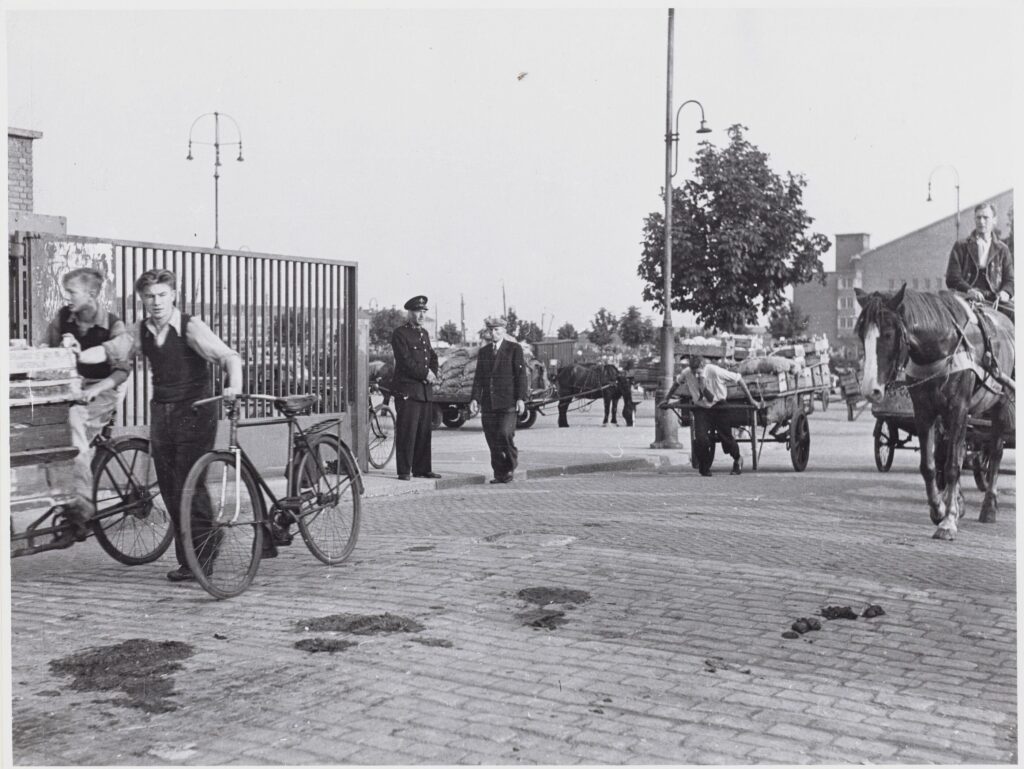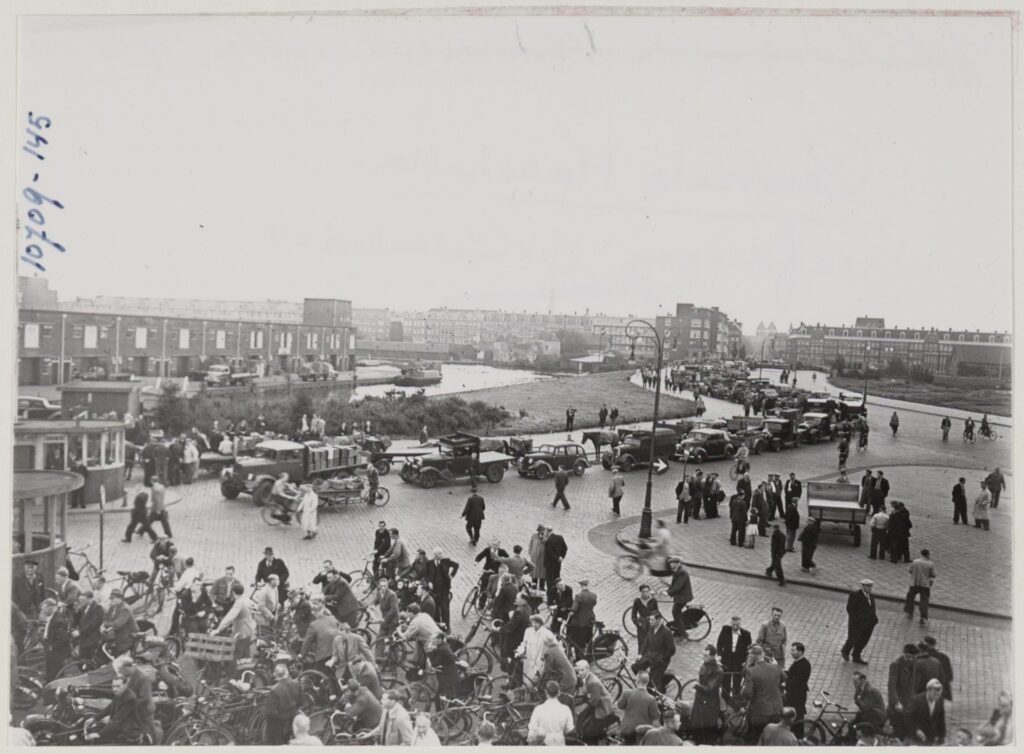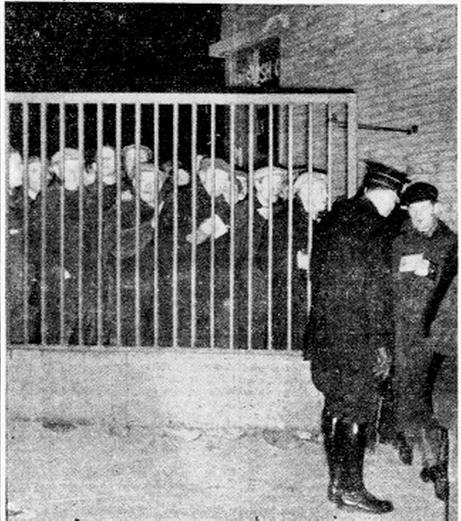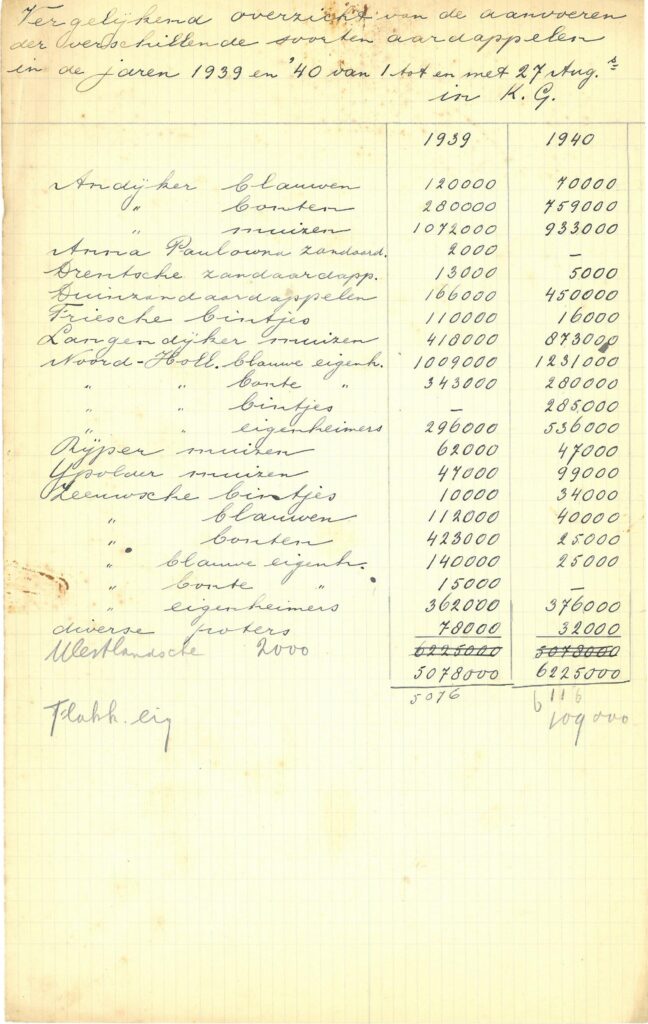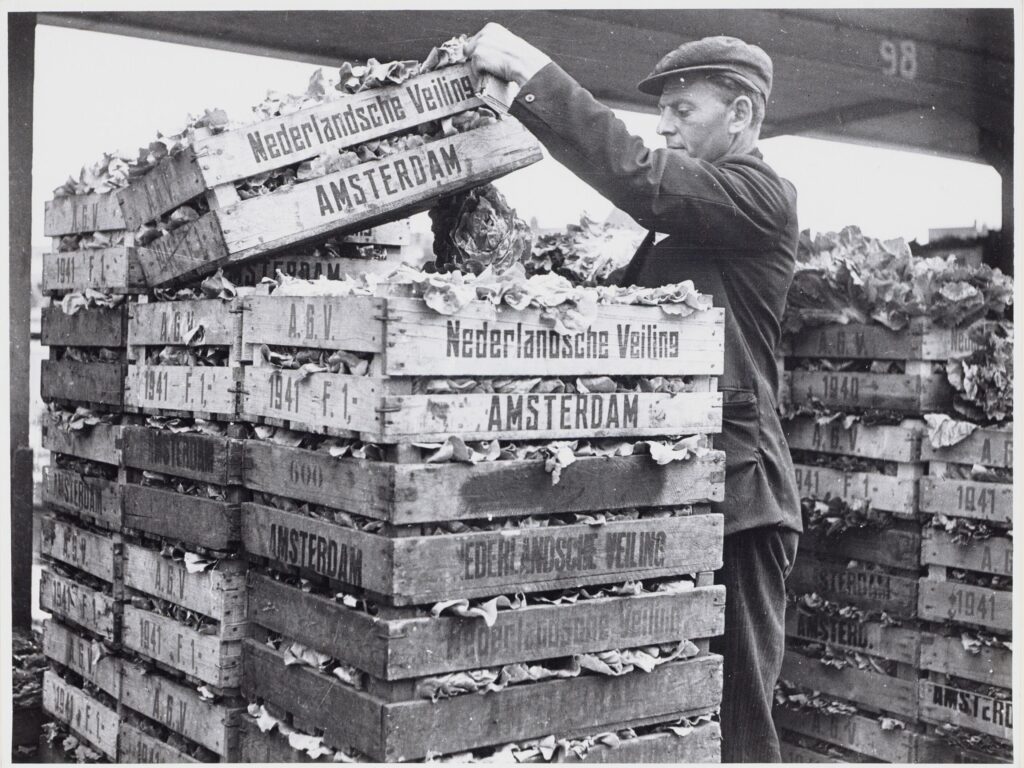April 10, 2024
Centrale Markt in 24 hours.
Just another auction day at the Centrale Markthal from the year 1939.
Found in the documents we discovered in the offices during the restoration. Using these documents, books from the library, and other newspaper articles, we managed to paint a vivid picture of the lively market activity that took place on the grounds.
6:30 AM
Atop the tower of the Central Market Hall in Amsterdam, the electric clock shows half past six. The Amsterdam vegetable and fruit shopkeepers wait behind the large gates until they can enter the premises. Empty hand carts, horse-drawn wagons, and a few small trucks stand behind them in the street. The men pressed right against the gate woke up extra early hoping to be the first inside. They have their identification cards ready, or else they won’t be allowed in. After all, other members of the public are not welcome on this well-secured site.
7:00 AM
The operations manager gives the signal, and a whistle blows. The gates are opened. The men push their way in and sprint to the docks where fruits and vegetables are piled high. Here, the rule is: first come, first served.
7:10 AM
It’s quite a walk for the shopkeepers to reach the docks of fruits, vegetables, flowers, and plants. Cucumbers, endives, apples, onions, crates of food are everywhere you look. The area in Amsterdam-West where the Central Market Hall is located spans 340,000 m2, which is over half the size of Vondelpark. Ports have been established for growers who transport their products by ship from the surrounding garden areas. Products brought in by land are housed elsewhere in the Central Market.
In no time, the storage sheds also bustle with activity. The supply of fresh vegetables and juicy fruits is closely examined, and then the rapid negotiations between the shopkeepers and wholesalers begin. Inspectors regularly walk around to keep an eye on things, but everyone knows that misbehavior will result in a temporary ban from the premises.
8:30 AM
Sweaty men haul crates of vegetables and fruits while trying to dodge bicycles and carts. In the background, the shrill whistle of a locomotive can be heard. Hundreds of crates and boxes are stacked, carts are loaded. Everyone navigates through the hustle and bustle, seemingly knowing exactly what they want and where they need to go.
Within two hours, the shopkeepers have purchased what they need from the wholesalers. They know their regular supplier well. They only switch suppliers if the delivered goods disappoint, which isn’t frequent. The competition is fierce, and therefore, so is the quality.
10:00 AM
The shopkeepers have slowly disappeared, making way for auctioneers and wholesalers. The auction starts at 10 o’clock in the Central Market Hall, the impressive building at the heart of the site. 100 meters long and 70 meters wide. Wholesalers first head to the exhibition area where fruits and vegetables on carts can be assessed for quality and potential purchase. Potatoes, flowers, and plants are also presented here.
12:00 PM
The auction halls on the north side of the nearly 6,000 m2 hall fill up. The spaces can accommodate 200 people. Traders take their seats on benches arranged like in a lecture hall. On the wall of the auction room hangs an enormous clock face with a single hand. All eyes are on the auctioneer who calls out the prices. The hand follows that price on the clock. A trader at the back presses a button. This is the price he’s willing to pay. A light illuminates the number under which the trader has registered. SOLD!!!
2:00 PM
The sun beats down on the broad glass roof of the Central Market Hall. Sixteen fans are blowing hard but are insufficient in this hot weather, blowing more warm than cool air inside. Employees in the offices on the upper floor take off their jackets. Wholesalers on the floor see their vegetables lose their vibrancy and look worriedly at the fruit. A single rotten spot can quickly spread, leaving no choice but to sell as quickly as possible. Fortunately, there is a large cold storage facility on the premises with three floors, primarily intended for longer-term storage.
5:00 PM
Thousands of empty wooden crates are stacked high on the site; the shopkeepers have returned the empty containers in exchange for a deposit, ready to be collected by the growers.
11:00 PM
Most of the goods that were auctioned off during the day will arrive overnight. Barges dock at the piers of the Central Market Hall’s ports with the products bought the previous morning.
4:00 AM
The first goods wagon with vegetables and fruits for sale reaches the area near the Central Market Hall, almost up to the gate at Jan van Galenstraat. Wholesalers load the cargo on the wide sidewalks next to the tracks.
5:00 AM
At 5 o’clock in the morning, wholesalers display their goods on the docks, ready for a new rush of shopkeepers and peddlers.
Photos: Collection of Amsterdam City Archives / Central Market Hall Archive
